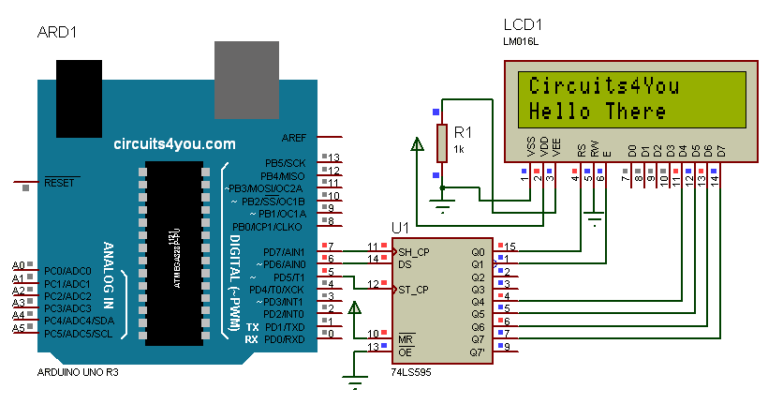
This makes sense if you have a array, just like the "registers" of a sensor. If the Master stops, the Slave does not use the remaining bytes in the buffer. The Master can do a Wire.requestFrom() and request 1 up to 32 bytes. In the requestEvent() function, you may fill the buffer with 32 bytes. The Slave just gives bytes, but does not know how many. When the Master reads data, the Master is in charge of the clock, the acknowledge and the stop. Thank you very much guys! For all the ideas. more or less like the usual protocol of any I2C device. Ignoring a setting byte results in a dismiss of it and not making any change at all.Īny additional byte is taken for a write operation according to the above listed settings. Second is the "pin index" where 7 bits are used to set a pin number ( A15 on an Arduino Mega equals 69), and the remaining one as the "ignore bit".
#Arduino wire library internal register how to#
I already have in mind how to overcome the half-duplex nature of I2C and it is by imitating that behavior. Look at an existing I2C port extender and just copy and extend that protocol to do what you want.Ĭorrect. Basically any request becomes two requests: first tell the slave what you want or how many, then request again to receive the bytes. If the datasheet says "write a 1 to this address and you will get 3 bytes back" then that's what you get. They don't have a general-purpose microcontroller on board. They're temperature sensors and memory chips. Think about most I2C devices that already exist. Only for the slave, that is the master can keep using the Wire library. Well, then a lower level implementation it would be. Oh yeah, the stop condition how could I missed that?īut that's not possible using the Wire library, you would have to write your own low level calls. It's possible to check for a stop condition and if no stop condition is reached just provide the next byte The I2C protocol doesn't provide that information. It's possible to check for a stop condition and if no stop condition is reached just provide the next byte but that's not possible using the Wire library, you would have to write your own low level calls. The event triggers once per request or once per byte? That's just an example, you can define any sequence just ensure the slave knows how much data to send.

If the master sends three bytes the slave sends the amount of data the third byte tells it to do. For example the master write a command byte and an address byte to the slave, the slave answers with exactly one byte of data. The slave knows because it's following a strict protocol. I'll appreciate any answer, since this doubt has me stuck

can I use the parameter's value instead of available() to determine how many bytes the slave received? I don't know what's really the deal, but I think it is redundant considering that available() does the same thing.

Why onReceive does have a parameter and onRequest does not? It would be more useful if the slave acknowledges how many bytes the master requested, instead of how many the slave received. How the slave can know when to stop sending bytes? The event triggers once per request or once per byte? I make this question because I want to implement a muti-byte feature that sends the state of consecutive pins if the master requests multiple bytes on a digital/analog read. If the master, in order to request (read) data from a slave, has to specify the amount of bytes it expects to receive then how the slave knows that if the onRequest event doesn't even have any parameter that tells it? What happens if the slave doesn't transmit the exact amount of bytes the master requests? I know (more or less) how I2C works and the way the master reads and writes to a slave but I don't have clear how the Wire library handles the slave's events: In order to avoid any unnecessary detour on the topic, I'm going straight to the point: the idea is to create a program that converts any of the most popular AVR Arduinos into a simple I/O expander (and keeping fuctions like analogRead and PWM output aka analogWrite) by using I2C as the controller interface.


 0 kommentar(er)
0 kommentar(er)
